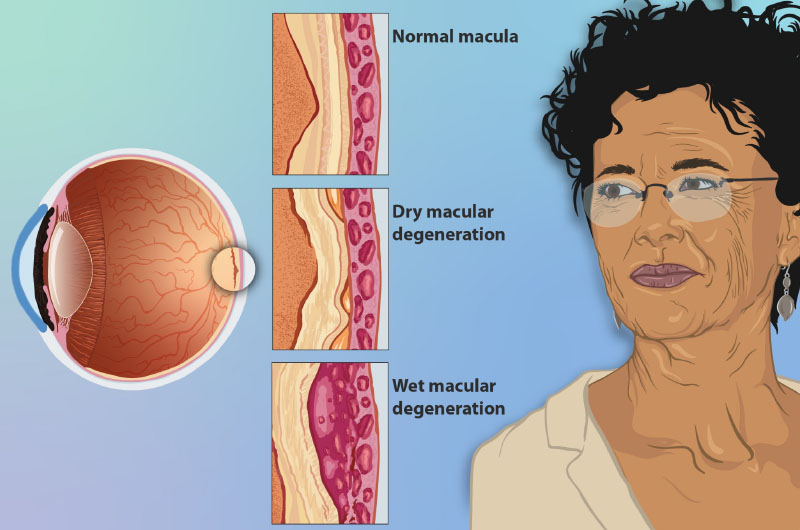
Transformative Advances in Age-Related Macular Degeneration Treatment
February is Age-Related Macular Degeneration
Age-Related Macular Degeneration (AMD) has long been a leading cause of vision loss and impairment among older adults, profoundly affecting their quality of life and independence. However, recent advancements in treatment modalities have ushered in a remarkable era of progress, offering renewed hope and significantly altering the trajectory of this debilitating condition.
Understanding AMD:
AMD is a progressive eye disease that primarily affects the macula, the central part of the retina responsible for sharp, central vision. As the disease advances, individuals may experience blurriness or distortion in their central vision, making tasks such as reading, driving, and recognizing faces increasingly challenging. In its advanced stages, AMD can lead to significant vision loss and even legal blindness, posing substantial burdens on affected individuals and their families.
Historical Treatment Landscape:
Traditionally, treatment options for AMD were limited, with the focus primarily on managing symptoms and slowing disease progression. The introduction of anti-VEGF (vascular endothelial growth factor) therapy in the early 2000s marked a significant milestone in AMD management. Anti-VEGF drugs, administered via intravitreal injections, target abnormal blood vessel growth in the retina, effectively slowing the progression of neovascular AMD, the most severe form of the disease.
Paradigm Shift with New Treatments:
In recent years, the landscape of AMD treatment has undergone a profound transformation with the emergence of novel therapeutic approaches. Gene therapy, for instance, holds promise as a potential game-changer in the treatment of AMD. By delivering functional genes directly to retinal cells, gene therapy aims to address underlying genetic mutations associated with AMD, offering the potential for long-term vision preservation and restoration.
Additionally, emerging modalities such as stem cell therapy and retinal regeneration hold the potential to repair damaged retinal tissue and restore vision in individuals with AMD. These innovative approaches represent a paradigm shift in AMD treatment, offering the tantalizing prospect of not just slowing disease progression but actively reversing its effects, thereby restoring sight and enhancing quality of life.
Impact on Patients:
The advent of these new treatments has had a profound impact on individuals living with AMD, offering newfound optimism and opportunities for improved visual outcomes. Patients who once faced the prospect of irreversible vision loss now have access to innovative therapies that hold the potential to preserve and even restore their sight. This transformative shift has not only improved clinical outcomes but has also alleviated the emotional burden and anxiety associated with AMD, empowering patients to envision a future with restored vision and enhanced independence.
Looking Ahead:
While the recent advances in AMD treatment represent significant strides forward, ongoing research and innovation remain essential to further refine existing therapies and develop new interventions. Addressing challenges such as treatment durability, accessibility, and affordability will be crucial to ensuring that all individuals affected by AMD can benefit from these groundbreaking treatments.
In conclusion, the landscape of AMD treatment has been revolutionized by the advent of novel therapeutic modalities, offering renewed hope and transforming the outlook for individuals living with this sight-threatening condition. As we continue to harness the power of innovation and collaboration, we move closer to a future where AMD is no longer a leading cause of vision loss, but rather a condition that can be effectively managed and, ultimately, conquered.




